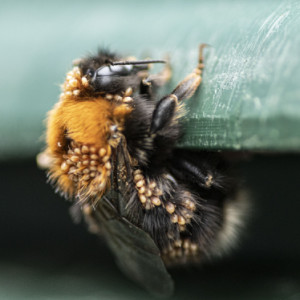Beetling About
Perhaps not as showy as yesterday's Rosemary Beetle, but strangely my first Ladybird of the lockdown (a Two-spotted), which, together with another 8 new species for the Lockdown Garden Wildlife Count, took me perilously close to the aim of 100 (sitting now at 98).
One of the 9 new species today was discovered while watching one of those that has been listed for quite some time - the Tree Bumblebee. There was one at the entrance to the bin wherein lies the nest, and it just didn't look 'right'. Close-up it looked damned unsettling. You'll see in the extras it was covered in what I finally determined to be Bumblebee Mites. Now bad as this looks, after a bit of reading it turns out they feed on pollen, so basically pick it up off the bumblebee's hair, as well as within the nest. They actually also feed on other little bugs, so might, long term, be good for the hive.
Fascinating wee things, they tend to attach to Queens more than drones or workers, primarily because the Queens find somewhere to overwinter. They can move from bee to bee either within the nest; by moving across during mating (so they 'will' attach to males, but usually to get somewhere); or by dropping off into a flower, where they can survive up to 24 hours before hitching a ride on another bee.
It's possible to have so many mites that a bee then struggles to fly, but this one had moved on when I went back to check half an hour later, so I think it was doing okay.
If you want to see a Ladybird open up its carapace and take flight in slow motion, then click on this link to Flickr....
(p.s. nice to bump into Trev in the Figgate while out for a walk in the early evening - not so nice the walk itself, just too many people (and dogs dogs dogs)).


Comments
Sign in or get an account to comment.


